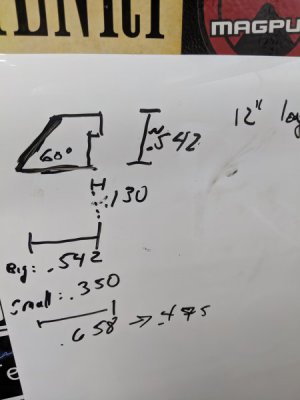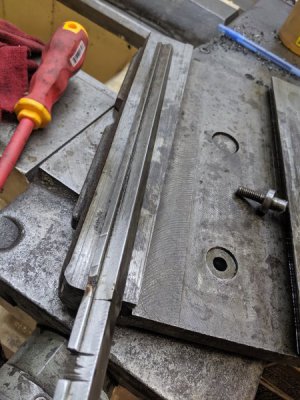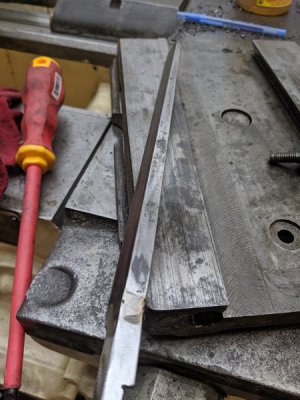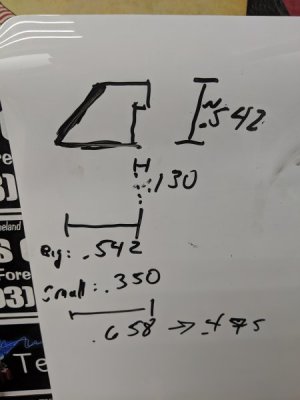- Joined
- Aug 3, 2017
- Messages
- 2,437
As some of you know, I have an old Navy ship lathe by Reed Prentice. I noticed the compound is really sticky, so I pulled it apart, and noticed my gib is pretty well hosed. its got a nice bend to it, and seems to either have been broken/welded since. The big part of the problem is the slot for the adjustment screw is too long, so it ends up binding every time the compound slide is moved. I figure I can make a new one on my milling machine!
First, I would think I need to do cast iron for this, right? Any idea what kind? Is there a good place to get small items like this? I have a metal supply on the way home, but I'll have to see if they can sell me a smallish amount. Everywhere online wants to sell me 1.25" square at minimum, when I need about half that in each direction.
I whiteboarded/measured the end of the material as you can see from my whiteboard measurement. It has a 60 degree angle on it, which I suspect I can cut with a dovetail cutter (I think I have one big enough) or by tipping the head or using a sine bar. The problem is, I also have to cut out the little notch on the left in the pictures. Additionally, I have to cut the taper, where it gets narrower as it goes 'away' from you in the drawing (and in the picture).
Anyone have any ideas on workholding or order of operations? Or a good source of smaller pieces of cast iron about a foot long?




First, I would think I need to do cast iron for this, right? Any idea what kind? Is there a good place to get small items like this? I have a metal supply on the way home, but I'll have to see if they can sell me a smallish amount. Everywhere online wants to sell me 1.25" square at minimum, when I need about half that in each direction.
I whiteboarded/measured the end of the material as you can see from my whiteboard measurement. It has a 60 degree angle on it, which I suspect I can cut with a dovetail cutter (I think I have one big enough) or by tipping the head or using a sine bar. The problem is, I also have to cut out the little notch on the left in the pictures. Additionally, I have to cut the taper, where it gets narrower as it goes 'away' from you in the drawing (and in the picture).
Anyone have any ideas on workholding or order of operations? Or a good source of smaller pieces of cast iron about a foot long?





